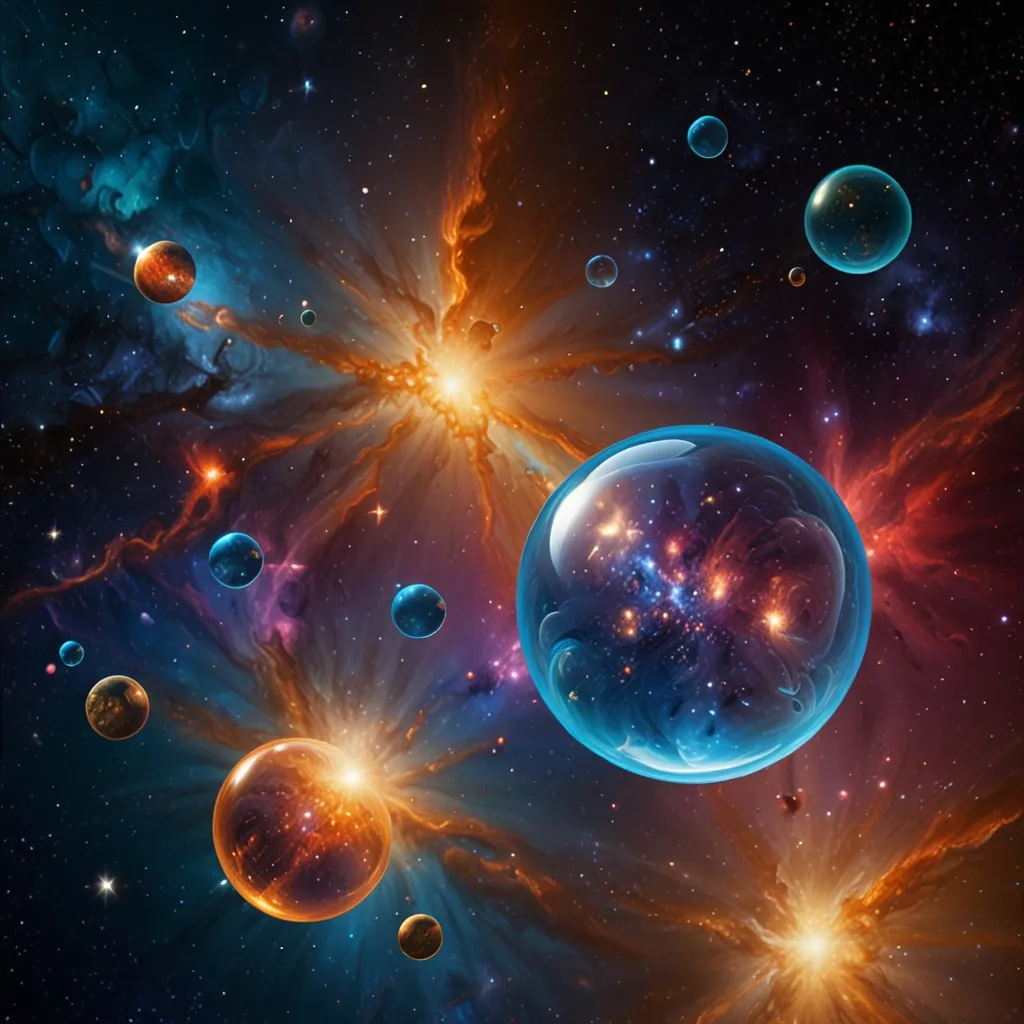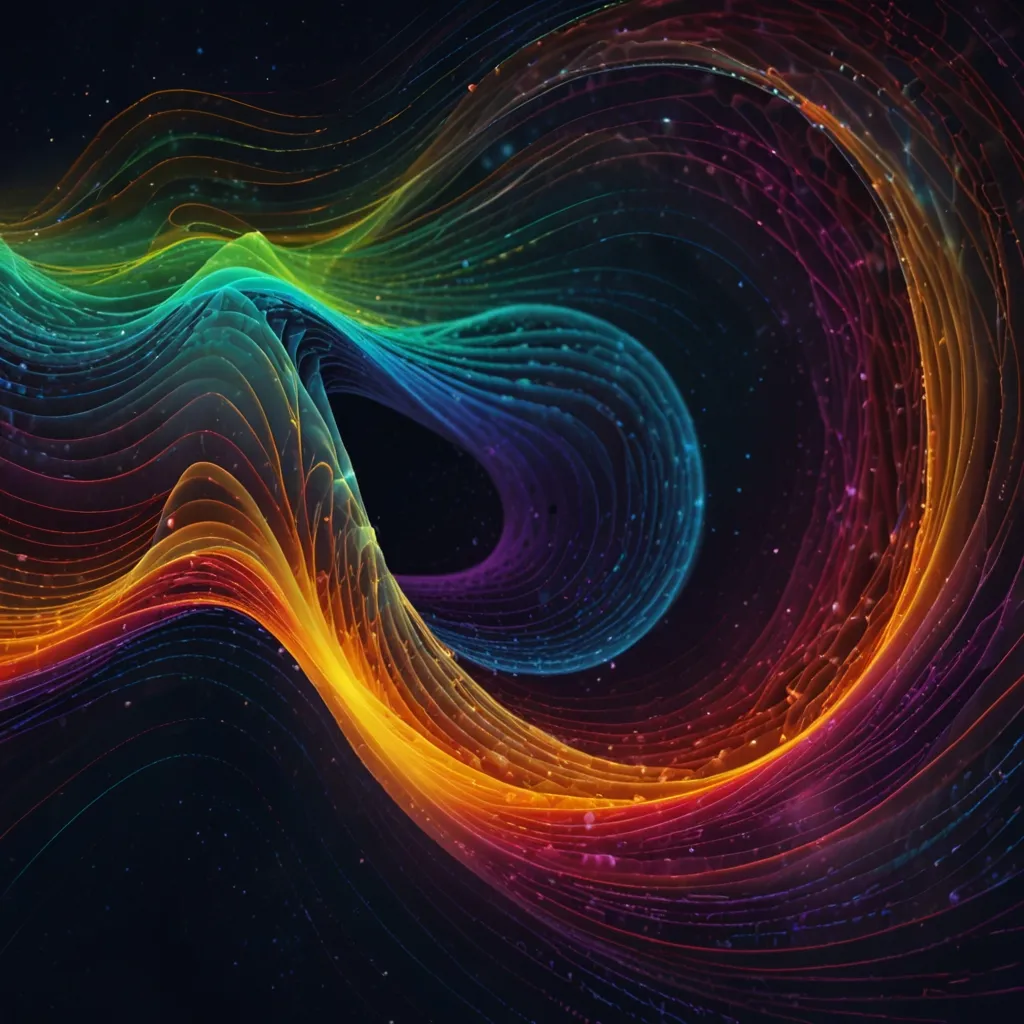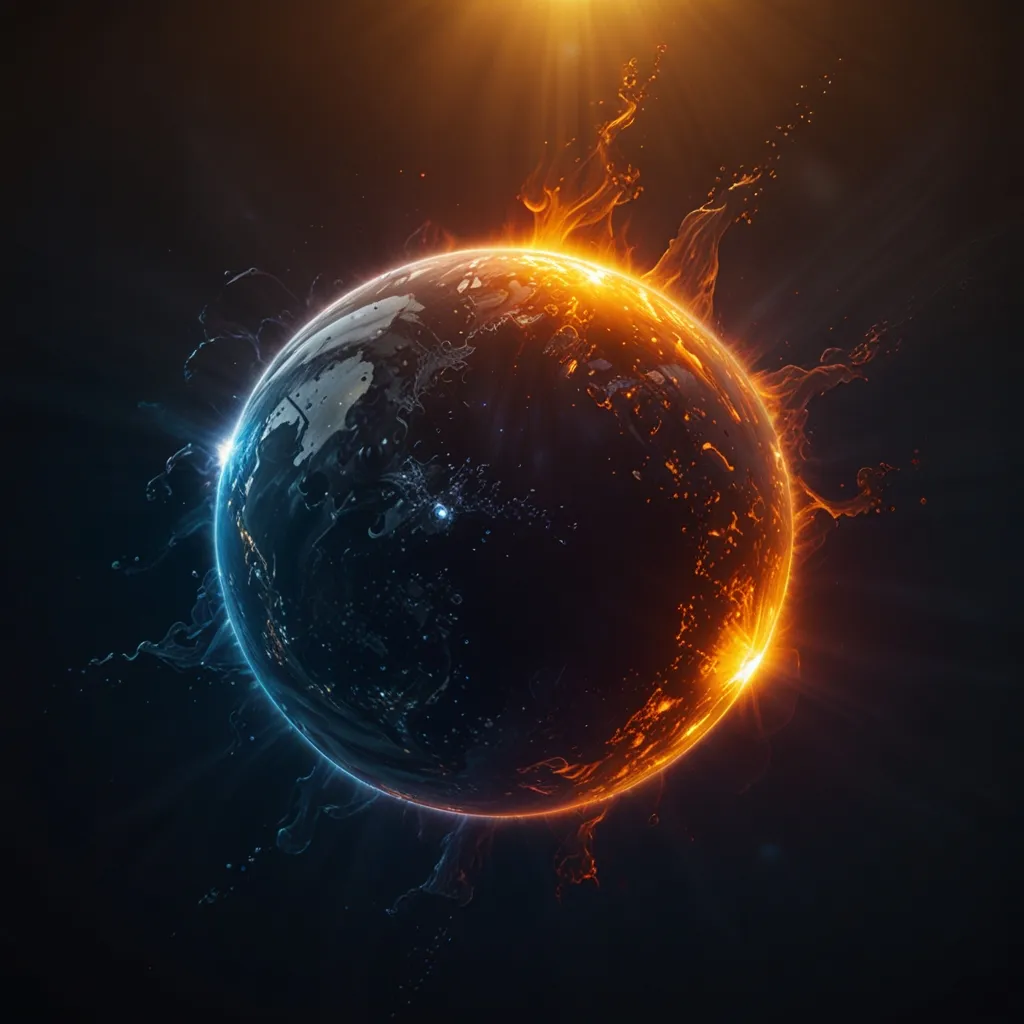The Big Bang model describes how our universe has evolved from the moment of its inception to today. But this model isn’t without its issues—it doesn’t fully explain why the universe looks so homogenous, why it appears geometrically flat, or why magnetic monopoles are absent. Enter cosmic inflation, a concept that addresses these problems and accounts for much of the universe’s current structure.
Cosmic inflation suggests that shortly after the universe began, it expanded exponentially at a speed greater than light for an incredibly brief period—a trillionth of a trillionth of a trillionth of a second—causing the universe’s volume to increase by a factor of around 10^78. This expansion implies that the universe, on scales larger than our observable section, might not be so uniform. By the 1990s, researchers surmised that this unevenness could mean inflation ended at different times in different areas, hinting that the universe could be more massive and complex than we realize.
This concept is known as eternal inflation. Essentially, while inflation ended in our part of the universe, it might have continued indefinitely in other regions, creating a multiverse—a multitude of bubble universes, each forming as different areas stop inflating. Within this eternally inflating space, new universes are continually emerging, making our universe potentially just one of many.
Inflation likely occurred because of a high-energy scalar field called the inflation field. As the universe cooled after this period of rapid expansion, this energy transformed into other fields and particles, letting the universe continue expanding at a much slower rate. Most models estimate this inflation lasted for a minuscule span—between 10^-32 to 10^-36 seconds. However, quantum mechanics ensures some randomness, causing inflation to last a bit longer or shorter in different regions, akin to radioactive decay’s unpredictability.
In the 1980s, scientists like Paul Steinhardt, Andrei Linde, and Alexander Vilenkin theorized that while inflation ceased in our slice of the universe, it could persist forever in other unobservable parts. Quantum uncertainty could allow portions of the universe to stop inflating even as other parts continue expanding, creating separate bubble universes, further spacing apart as inflation persists. This results in an ever-growing number of independent bubble universes, ensuring that inflation never truly ends.
Contrary to radioactive decay, where a finite amount of material eventually depletes, eternal inflation continuously produces new space, making inflation an endless process. Each bubble behaves as an isolated universe, expanding so rapidly that no information or matter can travel between them, effectively creating isolated cosmic islands.
If eternal inflation is accurate, we’re living in one of these bubbles. And it’s improbable ours was the first or even among the initial bubbles, given the sheer quantity constantly forming. Our current understanding of the Big Bang suggests a singular origin around 13.8 billion years ago, followed by cosmic inflation, which then slowed down, explaining much of what we observe today.
With eternal inflation, the narrative shifts: there might not have been a single beginning but an ongoing process of bubble universes forming. What we perceive as the universe’s inception was likely just where inflation halted in our region, situated within a more extensive, incomprehensibly vast expanse of multiverses.
So, what about these other universes? They could possess laws of physics differing from ours—distinct particle masses and force strengths—making them radically different or utterly inhospitable compared to ours.
The idea of proving these multiverses exists beyond reach since no communication can traverse the expanding space between them. Yet, by studying high-energy physics and gravitational waves, we might gather indirect evidence. Beyond the Large Hadron Collider’s current capabilities, future technologies may bring us closer to conditions resembling the Big Bang, potentially offering clues.
Just as we once believed the Earth, then the Sun, then the Milky Way was the universe’s center, ongoing exploration may reveal that our Big Bang was just one of many, thrusting us into even deeper cosmic insignificance. The quest for understanding never truly ends—it continually reshapes, just like the multiverses it aims to comprehend.






